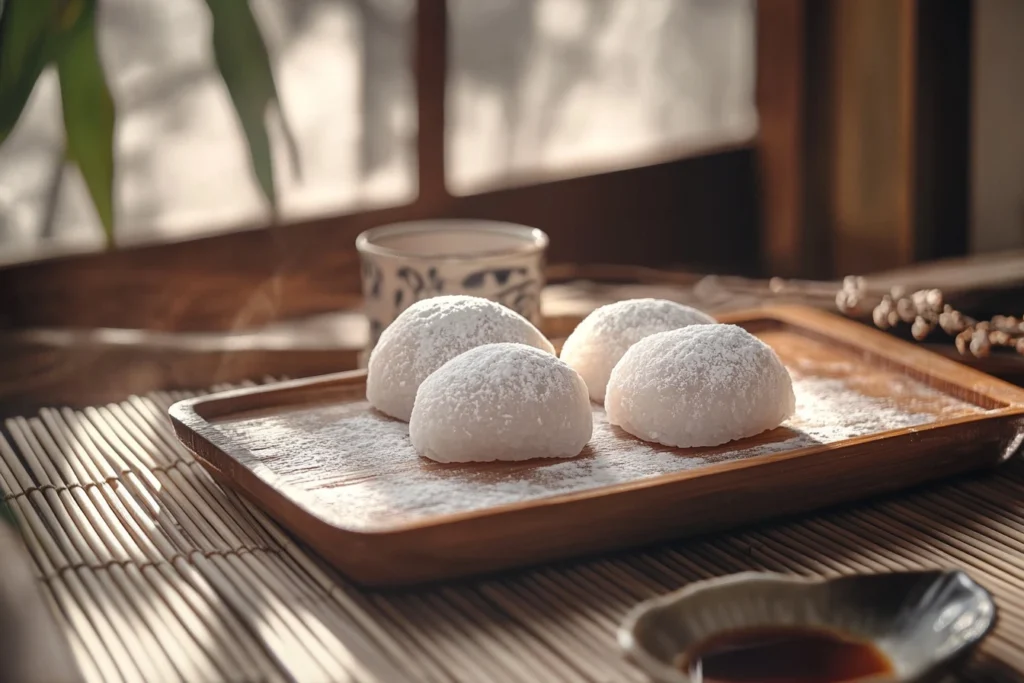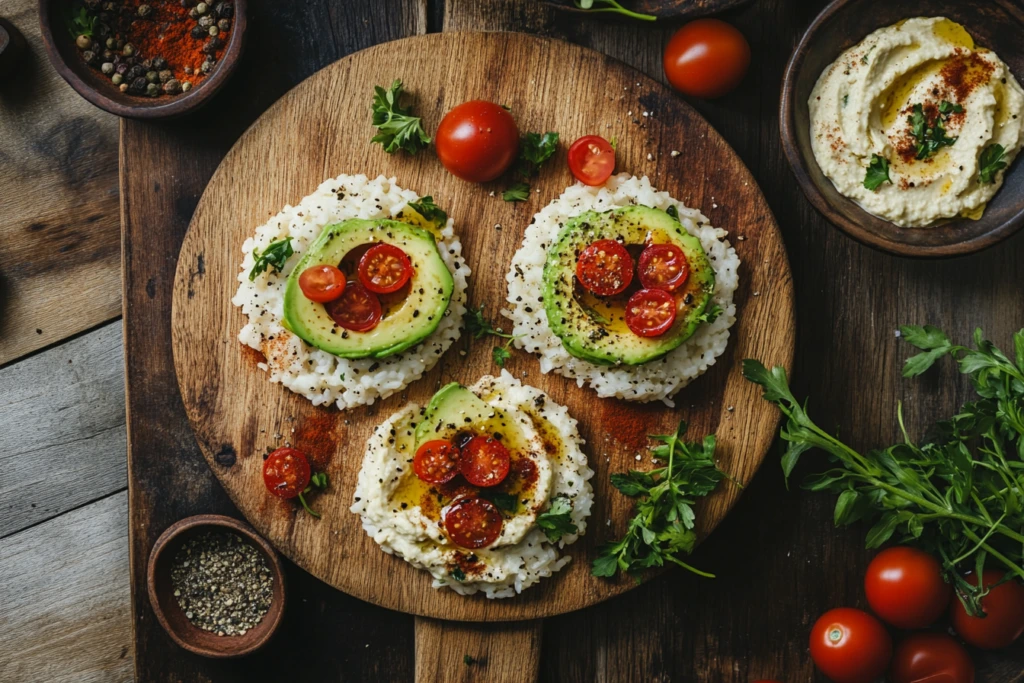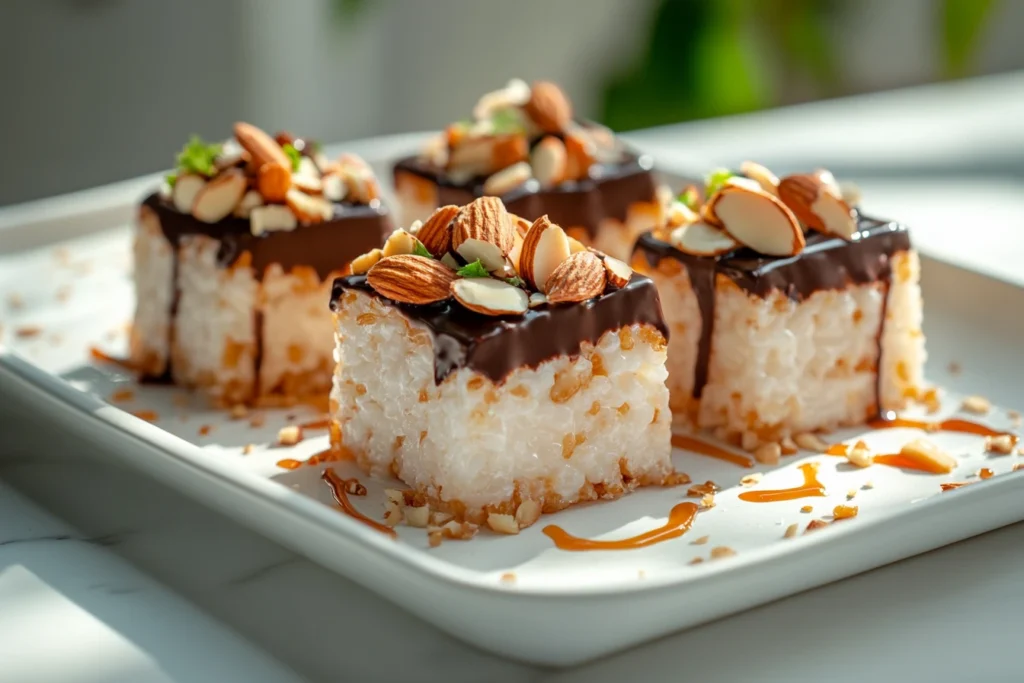1. Introduction to Rice Cakes
Rice cakes have become an iconic snack worldwide due to their light texture, low-calorie profile, and versatile uses. Originating from ancient Asian cultures, these cakes have evolved into modern pantry staples, often featured in diet plans and quick snacks.
Whether you prefer them as a healthy alternative to bread or as a base for savory or sweet toppings, rice cakes continue to gain popularity among health-conscious eaters. This article provides a detailed exploration of rice cakes, including their history, nutritional value, health benefits, and creative recipes.
2. History and Cultural Significance of Rice Cakes
2.1 Origins and Evolution
Rice cakes date back centuries, with origins rooted in Asian culinary traditions. In countries like Japan, Korea, and China, they were often prepared for festivals, rituals, and ceremonies.
- Japan: Known as Mochi, these cakes symbolize good fortune and are commonly consumed during New Year celebrations.
- Korea: Called Tteok, they play an essential role in ancestral rites and holidays like Chuseok.
- China: Nian Gao represents prosperity and is typically enjoyed during the Lunar New Year.
2.2 Global Popularity
In recent decades, rice cakes have expanded beyond Asia into Western diets, where they are marketed as low-calorie, gluten-free snacks. Health-conscious consumers often prefer them for their lightness and adaptability. Modern variations have also evolved into flavored options, catering to diverse tastes.
Their nutritional benefits and diet-friendly reputation have made them a go-to snack for athletes, dieters, and individuals seeking quick, healthy meals.
3. Types of Rice Cakes
Rice cakes are available in a wide range of styles, textures, and flavors, catering to diverse tastes and preferences. From traditional varieties rooted in Asian culture to modern adaptations designed for health-conscious diets, they have evolved to meet the needs of global consumers.
3.1 Traditional Varieties
3.1.1 Mochi (Japan)

Mochi is a soft and chewy rice cake made from glutinous rice. It is traditionally pounded into a sticky dough and shaped into balls or blocks.
- Often enjoyed during New Year celebrations and seasonal festivals.
- Filled with sweet red bean paste or served with savory toppings.
- Used in soups, desserts, and even ice cream products.
3.1.2 Tteok (Korea)
Tteok represents celebration and prosperity in Korean culture. It comes in multiple forms, including:
- Songpyeon: Small, half-moon-shaped versions filled with sesame seeds or red beans.
- Garaetteok: Cylindrical sticks often used in the popular dish Tteokbokki.
- Baekseolgi: Steamed and served plain, symbolizing purity.
3.1.3 Nian Gao (China)
Nian Gao, or Chinese New Year Cake, is made with glutinous rice flour and symbolizes good fortune.
- Typically steamed and served in thin slices.
- Prepared either sweet with sugar or savory with vegetables and meats.
3.2 Modern Varieties
3.2.1 Plain Rice Cakes
Plain rice cakes are the most common type available in grocery stores today.
- Made from puffed white or brown rice, pressed into thin, crispy discs.
- Favored as a low-calorie option for snacking.
- Pair well with spreads, dips, and toppings. (For more creative snack ideas, check out this recipe guide for healthy toppings.)
3.2.2 Flavored Rice Cakes
Modern consumers can enjoy a variety of flavored options to suit specific tastes:
- Sweet Options: Chocolate, caramel, and cinnamon.
- Savory Options: Salted, cheese-flavored, and sour cream.
- Often marketed as on-the-go snacks.
3.2.3 Brown Rice Cakes
For whole-grain enthusiasts, brown version offer added fiber and nutrients.
- Ideal for health-conscious eaters focusing on heart health.
- Often paired with nut butters and avocado for a nutrient boost. (Learn about nutritious spreads from this burger sauce recipe.)
3.3 Specialty Rice Cakes
Some rice cakes cater to specific dietary preferences and functional foods:
- Organic formula: Made without pesticides or artificial preservatives.
- Multigrain formula: Blended with quinoa, millet, and seeds for added nutrition.
- Mini formula: Bite-sized versions for snack packs.
4. Nutritional Value of Rice Cakes
They are widely recognized for their low-calorie content and simple ingredients. While they may not be the most nutrient-dense snacks, they can still play a role in healthy diets when paired with nutrient-rich toppings. This section explores their macronutrient profile, vitamins, and minerals, along with a comparison to other snacks.
4.1 Rice Cakes Key Nutritional Information
4.1.1 Macronutrients
A plain rice cake typically contains:
- Calories: 35–60 per piece (depending on size and ingredients).
- Carbohydrates: About 7–14 grams, providing a quick energy boost. (Learn more about the nutritional breakdown and health benefits of rice cakes in this Healthline article.)
- Protein: Minimal amounts, averaging 0.7–1 gram per cake.
- Fats: Less than 0.5 grams, making them an almost fat-free option.
4.1.2 Micronutrients
Rice cakes made from brown version offer slightly better nutrient density:
- Manganese: Supports bone health and metabolism.
- Selenium: Contributes to thyroid health and antioxidant protection.
- B Vitamins (Niacin and Riboflavin): Help with energy production.
4.2 Health Benefits of Rice Cakes Based on Nutrients
4.2.1 Low-Calorie and Weight-Loss Friendly
Rice cakes are naturally low in calories, making them a popular snack for those following weight-loss diets. Their crunchy texture provides satiety, especially when topped with protein-rich spreads like peanut butter or hummus.
4.2.2 Gluten-Free Option
Since rice cakes are made from rice, they are naturally gluten-free. This makes them an ideal snack for people with gluten sensitivities or those with celiac disease. (For more gluten-free alternatives, explore this guide to recipes.)
4.2.3 Energy Boosting
With simple carbohydrates, rice cakes provide a quick energy source—perfect for athletes or those needing a pre-workout snack.
4.2.4 Blood Sugar Concerns and Solutions
While rice cakes have a high glycemic index (GI), pairing them with proteins and healthy fats helps balance blood sugar levels. For example, adding avocado or almond butter provides sustained energy without causing spikes.
4.3 Comparison with Other Snacks
– Rice Cakes vs Crackers
- Rice cakes are lower in fat and sodium compared to crackers.
- However, crackers often provide more fiber and protein, making them more filling.
– Popcorn vs Rice Cakes
- Both are low-calorie snacks, but popcorn typically contains more fiber due to its whole-grain composition.
- Rice cakes are easier to portion control.
– Granola vs BarsRice Cakes
- Granola bars are higher in protein and fiber but also contain added sugars and calories.
- They are a cleaner snack option with fewer ingredients.
5. Health Benefits of Rice Cakes
Rice cakes have earned a reputation as a healthy snack option, especially for those seeking low-calorie, gluten-free alternatives. While they may not provide a nutrient-dense profile, they offer several health benefits when consumed as part of a balanced diet.
5.1 Low-Calorie and Weight-Loss Friendly
Rice cakes are often recommended for weight-loss diets due to their low-calorie count.
- A plain rice cake contains only 35–60 calories, allowing for portion-controlled snacking.
- Their crunchy texture satisfies cravings for chips or crackers without added fats or oils.
How to Maximize Weight-Loss Benefits:
Pair them with high-protein toppings, such as:
- Cottage cheese or Greek yogurt for muscle recovery.
- Nut butters for healthy fats and sustained energy.
This combination improves satiety and reduces the risk of overeating later in the day.
5.2 Gluten-Free and Digestive-Friendly
Rice cakes are made from 100% rice, which is naturally gluten-free. This makes them an ideal snack for individuals with:
- Celiac disease or gluten sensitivity. (Read more about how they support gluten-free diets in this WebMD article.)
- Digestive issues, as rice is easy to digest and gentle on the stomach.
Tip: Opt for brown version to increase fiber content, which promotes gut health and regular bowel movements.
5.3 Blood Sugar and Glycemic Index Considerations
Rice cakes have a high glycemic index (GI), meaning they can cause rapid spikes in blood sugar levels. For people with diabetes or insulin resistance, this may be a concern.
Solution: Pair them with:
- Healthy fats (e.g., avocado or almond butter) to slow down digestion.
- Lean proteins (e.g., tuna or turkey slices) to stabilize glucose levels.
Quick Fact: Studies show that adding fiber and protein to meals lowers the glycemic response, making them a more balanced snack.
5.4 Energy Boosting and Workout-Friendly
Rice cakes serve as a quick energy source, thanks to their carbohydrate content. This makes them ideal for athletes or anyone needing a pre-workout boost.
- Their lightweight texture avoids bloating or heaviness, providing instant energy for physical activity.
- Bodybuilders frequently consume them because they deliver fast-digesting carbs, helping to replenish glycogen stores after workouts. (Learn more about meal ideas with this protein-packed recipe guide.)
5.5 Versatility in Healthy Eating
Rice cakes are highly adaptable and fit various diet plans, including:
- Keto diets: Pair with avocado or eggs for low-carb options.
- Vegan diets: Combine with hummus or guacamole for plant-based nutrition.
- Paleo diets: Use with almond butter and seeds for a natural energy boost.
6. Culinary Uses and Recipes
Rice cakes are versatile ingredients that can be enjoyed in both savory and sweet dishes. Their neutral flavor and crispy texture make them the perfect base for creative recipes. Whether served as quick snacks, main courses, or desserts, they adapt easily to various flavor profiles.
6.1 Snacks and Appetizers
Rice cakes shine as healthy snacks that can be customized with nutritious toppings.

Popular Snack Ideas:
- Avocado Smash: Top them with mashed avocado, sea salt, and chili flakes for a fiber-rich snack.
- Peanut Butter and Banana: Spread natural peanut butter and layer with banana slices for energy and protein.
- Hummus and Veggies: Add hummus, cucumber slices, and cherry tomatoes for a vegan-friendly appetizer.
Quick Tip: Drizzle honey or balsamic glaze for an extra flavor boost.
6.2 Main Course Pairings
Rice cakes can replace bread or tortillas, making them a low-calorie substitute for meals.
Creative Ideas for Meals:
- Mini Rice Cake Burgers: Stack grilled chicken or turkey patties between two brown versions and add lettuce, tomato, and mustard.
- Stir-Fry : Use Korean Tteok in stir-fry dishes with vegetables, garlic, and soy sauce for a savory Asian flavor.
- Soup Additions: Crumble them into soups as crouton alternatives.
Pairing them with high-protein toppings ensures better satiety and nutritional balance.
6.3 Desserts and Sweet Treats
Rice cakes also make excellent dessert bases.

Sweet Treat Options:
- Chocolate-Coated: Dip them in dark chocolate and top with almond slices.
- Yogurt and Berries: Spread Greek yogurt and add mixed berries with a drizzle of maple syrup.
- Caramel Apple Delight: Layer sliced apples with caramel sauce and cinnamon for a seasonal treat.
Tip: Sprinkle chia seeds or coconut flakes for added texture and nutrients.
6.4 Meal Prep and On-the-Go Ideas
Rice cakes work well for meal preps and portable snacks. They are non-perishable and easy to pack for lunches or travel.
- Quick Packs: Prepare mini rice cake sandwiches with nut butter and jam for kids’ lunches.
- Fitness Snacks: Keep plain version in gym bags to pair with protein shakes for post-workout recovery.
7. Frequently Asked Questions (FAQs)
7.1 Are Rice Cakes a Healthy Snack?
Yes, rice cakes can be a healthy snack when consumed in moderation and paired with nutrient-dense toppings. They are low in calories and gluten-free, making them ideal for weight-loss diets and snack alternatives. However, plain combination lack protein and fiber, so adding nut butters, hummus, or avocado can improve their nutritional value.
7.2 Why Do Bodybuilders Eat a Lot of Rice Cakes?
Bodybuilders often choose rice cakes for their fast-digesting carbohydrates, which help replenish glycogen stores after intense workouts. In addition, they also provide a quick energy boost, making them ideal for pre- and post-workout meals when paired with protein-rich toppings like turkey slices or cottage cheese.
7.3 What Is Rice Cake Made Of?
Rice cakes are primarily made from puffed white or brown version, which is pressed into circular or rectangular shapes. Traditional varieties, such as Mochi or Tteok, are prepared using glutinous rice flour, giving them a chewy texture. Modern versions may include seasonings, seeds, or grains for added flavor and nutrition.
7.4 What Is the Disadvantage of Rice Cake?
One drawback of rice cakes is their high glycemic index (GI), which can cause spikes in blood sugar levels. They are also low in fiber, protein, and essential nutrients, making them less filling. To balance this, it’s recommended to pair them with healthy fats or protein to slow digestion and improve satiety.
8. Conclusion
Rice cakes have evolved from traditional Asian delicacies into modern-day snacks, celebrated for their low-calorie content, gluten-free properties, and versatility. While they may not be the most nutrient-rich option, they provide a quick energy boost and can easily fit into weight-loss plans or active lifestyles.
Their ability to pair with savory or sweet toppings makes them adaptable for every meal, from light snacks to creative recipes. However, to enhance their nutritional value, it’s essential to combine them with fiber, protein, and healthy fats.
For anyone looking to include this master piece in their diet, they offer a convenient, portable, and satisfying option—whether you’re a fitness enthusiast, a health-conscious eater, or someone looking to try new flavors and textures.
